I am a hydrologist. And I'm intrigued by the opportunities I see to incorporate gender into biophysical models.
To many of my hydrology colleagues it may sound like I should be standing up at a self-help meeting if I am going to make such proclamations. After all, we're concerned with the physical and quantifiable world. A world governed by physics, a world where variability and uncertainty are still somewhat quantifiable and predictable. Precipitation, streamflow, runoff, evapotranspiration, and groundwater. These are all measurable, and predictable, inputs and outputs of a system we call the water cycle. When we are asked about how we understand this system, it is quite simple: physics.
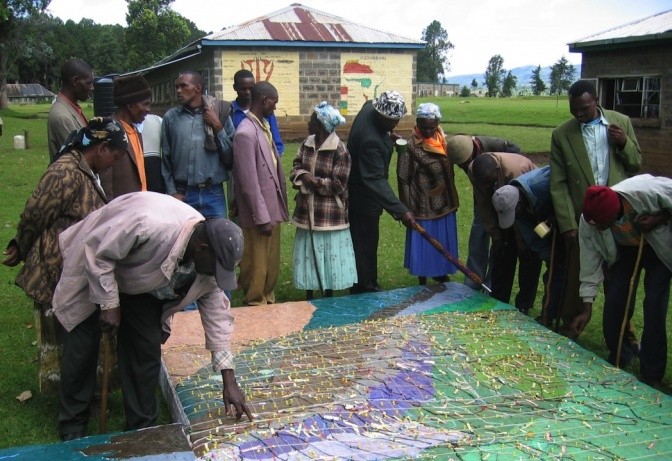 Community members in Njoro, Kenya draw maps of the watershed. Photo: Scott Miller/University of Wyoming
Community members in Njoro, Kenya draw maps of the watershed. Photo: Scott Miller/University of Wyoming(Stereotyped) Perception of social sciences from a biophysical scientist's point of view:
Laws that govern our physical world operate irrespective of gender (or any other social variables you might plug in here), and so when biophysical scientists are asked to incorporate gender into their work, sighs and eye-rolls abound. At best, we may be handed off information from spatially referenced paper surveys that we can't link to physically-based models. In the worst case scenario, we are given “stories” that come from meetings or focus groups where we envision the participants all sitting around holding hands.
The idea that social sciences employ rigorous methods and produce results that are not only beneficial to biophysical sciences, but that can also ensure the uptake, adoption, implementation and therefore longevity of our land and water management recommendations, simply never occurs to many of us.
Why? Well, as I told one of my social science colleagues during the CGIAR Research Program on Water, Land and Ecosystems (WLE) Gender and Water Workshop, “it's because you don't have a Nash-Sutcliffe statistic.” I laughed, but there is some merit to this statement as it relates to the language we use to describe our work, and we simply don't speak the same language.
The things is, it doesn't have to be this way. I have the great fortune of coming into the physical sciences later in my education after obtaining my undergraduate education in Philosophy. One of the first questions I asked as I was being trained in hydrology was, “where are all the people in this research we're doing?” I wanted to know how it was possible to truly understand the system, the bigger picture, without incorporating the why and the how of the people interacting with and upon the landscapes.
Leave that to the social scientists to sort out I was often told. And there we all went off operating in parallel pursuing somewhat independent research projects.
But gender doesn't fit in my equation
Imagine if you hired an electrician and a carpenter to come into your home and put in a new wall with a power outlet and they operated in parallel instead of together? You might get a wall in one place and a new electrical outlet in some other place. In despair you'd shake your head saying, “I wanted a new wall with a power outlet not a new wall and a power outlet.” You'd likely never hire that crew again. And, we won't even go into how the two independently decided where to put your, not their, new wall or the power outlet.
I understood that the biophysical models we use cannot take direct inputs about gender into their equations, but I couldn't accept that the way we develop model inputs was the only valid method. On the other hand, I could accept that while the social scientists may derive valuable information from various field methods they employ, it wasn't particularly useful in putting together a biophysical model.
This last point dominates the mind of many biophysical scientists and misses the point entirely.
There are many approaches to modeling biophysical environments and as all modelers are taught from the beginning, “all models are wrong but some are useful”. What makes a model useful? In the context of research for development, it must have a practical application and be grounded in reality. When used to assess trade-offs, model inputs must reflect people because they are the main drivers of change within systems.
Many of the hydrological models employed by researchers require only a few inputs: topography, land use, climate, and soils. We are able to derive these from field surveys, remotely sensed data products, and instruments.
In some cases, generating data that will be used in a model is as much an art as it is a science because at many points assumptions must be made and not all scientists will make them in the same way and sometimes it is based on … preference. In other words, even at this high level, we accept that there are multiple forms of knowledge within some set of parameters or guidelines.
But then can't we generate model inputs from other forms of knowledge, from people's perceptions? And, if we use these inputs to drive biophysical models, what can we learn? What will it tell us about how people understand and interact with the landscape? Could this even lead us to developing improved models or modeling systems?
My "aha" moment
For me, I had an "aha" moment many years ago that really drove home the value and need for incorporating different types of knowledge and perceptions. After developing scenarios with a team of scientists and community members and then running them through various biophysical models, it seemed that we had collectively come up with good land use management alternatives.
This notion was rocked, however when I was looking at a 3-D map made by women in the Njoro watershed where I was working. I noticed that in one area of the river, a path indicating a crossing was present. I also knew that based on my modeling, this area was often under water during the rainy season. It was an area where children crossed the river for school. None of this had come up during meetings or surveys as an issue, but only when people engaged in making maps that are organically derived from people's experience.
So what? Well, the result is that during a portion of the year children cannot go to school and eventually they stop going to school as they become engaged in other activities. In other words, the alternative land management scenarios were not ok, although from a biophysical and economic perspective they were improvements over the current situation on the ground.
Bringing the social and biophysical sciences together
Within the CGIAR Research Program on Water, Land and Ecosystems (WLE), we are embarking on a journey to bring the social and the biophysical sciences together using novel approaches where we recognize that all knowledge is biased to some extent. While in the physical sciences there is a perception that we approach challenges using dispassionate (e.g. quantitative) methods, by taking a step back we can quickly see that the research questions we formulate are in fact grounded in our own life experiences.
Like all people in all aspects of life, we recognize the things we are “trained” to see or have a particular interest in, but miss others. This doesn't invalidate the science we do, but in fact by actualizing this human limitation to knowledge, we open the door of opportunity to advance our science by embracing and coming up with ways to incorporate other forms of knowledge.



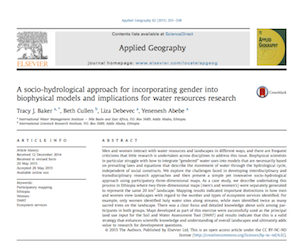
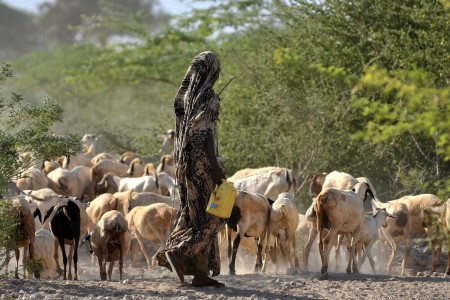



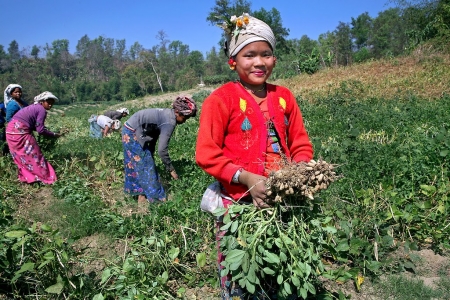



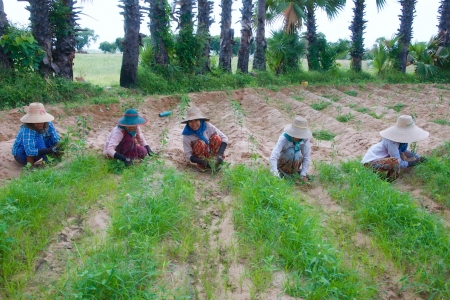
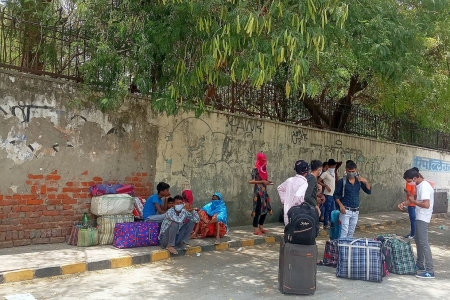




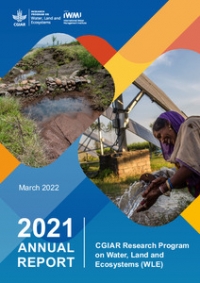
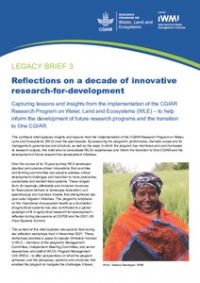
Comments
Tracy, I am really glad you have posted this well-written piece. Speaking as part of the ancient history of modern water management, I was involved in a similar experience on the Gal Oya Project in Sri Lanka, where it was really tough to convince engineers that farmers had important knowledge about their system. In its early years, IIMI (now IWMI) documented numerous similar examples in Nepal, Philippines, Sri Lanka, Pakistan and elsewhere. Examples are work by Bob Yoder on hill irrigation systems, and a spreadsheet model developed by Sakthivadivel and Jeff Brewer (an anthropologist) for using indigenous knowledge to design interventions on tank cascades in Sri Lanka. But all that knowledge and experience has apparently been lost, and we are now "re-discovering" it [though these are available as IIMI pubs--there is a CD with all these ancient IIMI pubs].
I hope you are right that WLE will provide creative opportunities for hydrologists and others to work with social scientists. We are after all dealing with human-biophysical systems in watersheds.
Thank you, Doug. Also, thanks for your reference to previous work within IIMI (IWMI). I will definitely download these working papers. It is interesting to note that some of these types of integrated ideas picked up steam in the early 2000's in academic circles, but quickly went off the radar. Not sure what caused this.
I am often struck by the disregard for indigenous or local knowledge in many of the "hard" applied sciences, such as agricultural development and natural resources management. There seems to be a perception that if you give credence to such non-scientific knowledge, then you are somehow putting aside your own knowledge. One ought to inform the other in some way. There are certainly many aspects of the natural world that biophysical scientists can explain and understand in ways that others do not, cannot, and should not be expected. We readily accept this, but have a harder time accepting knowledge coming in the other direction.
Two seemingly simplisitc points:
1) People intuitively know and some understand some aspects of the natural environment based on living in and interacting with it. For example, you don't need a degree in meteorology or quantitative knowledge about cloud formation and precipitation to "know" that on some days when you look out at the sky, an umbrella is in order. This is a positive point (acknowledgement) from which to communicate about science.
2) Human beings do not necessarily interact with their environment based on what is "scientifically correct" (even when presented with strong evidence), but rather on what they perceive or "believe" to be true based on a set of factors than often have nothing to do with science.
As biophysical scientists, we are taught to pursue our hypotheses in a systematic and rigorous matter, which allows us to replicate one another's work as well as quantify the degree of certainty with which we can make statements. In fact, within the hard sciences, we we are not trying to “prove” anything. We set out to disprove and each time we are unable to do this, our hypothesis gains strength.
We test and test, and this is a good thing.
At the same time, however, we must work within the boundaries of Point 2 above. Ultimately, few decisions in the world are made based on scientific observation and knowledge, but rather on social structures that are grounded in beliefs or customs, which are not so open to being tested. Organizations like IWMI and programs such as WLE in particular stand at a great moment in time where shifts in how we communicate about science can help bring about new paradigms. That said, we can only do so by uniting across our disciplines through methods that respect and engage with multiple forms of knowledge.
Tracy - This is a really well written article. This is a subject which I am also very passionate about: institutional language/cultural barriers. Communication and broad stakeholder participation - specifically with indigenous cultures - is key to solving many of our local, regional and global challenges. I also come from a very interdisciplinary professional background and I am constantly frustrated by the silos from which most of us work. Have you ever read the book "The Power of Postive Deviance"? Its an easy read, but the message is clear - local knowledge is imperative to solving some of the world's toughest challenges. And if certain types of people do not have the opportunity to have their voice heard (e.g. gender bias) we are losing out on some really great knowledge, wisdom and experience. Thank for your great article - we need more of these.
Thanks for your comment Marla and glad you liked the post. The book you mention looks like an interesting one to pick up, and in general the approach is intriguing from what I had a limited time to read up on today. While it appears to be dominantly applied in public health situations, I can see how this approach might also be quite useful in identifying less commonly used adaptive strategies related to water management. I saw a really great talk today from one my colleagues in Cairo (Edwin Rap: https://www.iwmi.cgiar.org/about/staff-list/edwin-rap/) about farmers adapting their irrigation strategies when there are major changes in the overall flows through canal systems, which may be caused by any number of factors from environmental to political decisions. Questions arose then as to whether there should be efforts to integrate such rare innovative designs into re-engineering irrigation structures, or do you just leave the situation continue in this organic fashion. Issues of course hinge in this situation on government regulation often and whether there is active enforcement of these often illegal structures or modifications.
Well, Tracy, Welcome to the real world.
I have always been a bit gaga over how “scientists” disregard the most important operating parameters. Think about it:
Question 1: What is the cause of pretty much every environmental problem in the world?
A1: People
Q2: What represents the potential solutions to these environmental problems?
A2: The same people.
FACE IT! If there were no people, there would be no problems.
The bottom line for scientists: DUH!
Scientists no longer have the luxury of pristine environments for their research. People are everywhere, seeking resources for their survival. I have a Msc in Watershed Management, but was immediately cast into community-based systems. You cannot do anything without local supoort, and if you don’t have that support, your recommendations are worthless.
Mark, thanks for this reply. Your post helps highlight an interesting phenomenon across all disciplines that I see often, which is how to bridge the gap in communications. Having come from a social science background and working in an entirely different field (victims rights advocation), I have had the great fortune to experience working on a variety of challenges from different sides of the fence so to speak. Initially, I often found it difficult to engage with the hard science side of environmental or development related issues, and I felt like it took many years to feel comfortable (confident?) with the language and methods being used. Interestingly enough, however, as I grappled with this major shift I had another aha moment that occurred in the reverse of the one I write about above.
I was working in South Sudan and met a young man in a far off-the-beaten path rural area. He was working with a small NGO putting in groundwater wells. As we began discussing how their organization decided where to put the wells, he indicated that no one within the organization knew much about groundwater and they hadn't consulted with any geologists, hydrologists, or soil scientists. This really shocked me because it can have serious implications on draw downs for nearby wells, which can ultimately lead to severe community conflict. Within the groundwater research literature on Africa, this is an issue that is often highlighted (lack of proper borehole siting). When speaking with a local commissioner in the area about this concern, he indicated that indeed when people come form outside to put in boreholes, he decided where it would go and it was more about who was due a favor and that no science when into it.
I would say these two aha moments combined are what solidified my pursuit of improved communication with all levels of stakeholders and an emphasis on supporting and facilitating interdisciplinary work. It is well known that decisions in many places are made along social lines of political favors owed, customs, beliefs, or simply who has the money and only rarely on science. The then becomes getting the best available science to people through these mechanisms and that can only be done be working with social scientists. Ultimately, people (and as you point out, we are only talking about this because people exist in the world) will do what they want, and the role of science in the context of research for development should be to help inform that decision but not to make it. I would go a step further to even say that there should also be more research that is informed by people. This is where the above commenter's (Marla) assertion about gender bias is particularly relevant given that most research questions are formulated by men and more often than not address quite male focused issues.
It is definitely good to see after so many years that this type of dialog among people is beginning to develop. It has been too long in coming and I have no doubt that we have a long road still to travel. For many of us working on this challenge our mantra has become as the old African proverb: “If you want to go fast, go alone. If you want to go far, go together.”
This is how change takes place: slowly and one person at a time. If your models are really better because they incorporate social elements, people start using your models instead of the 'pure physical' models, and eventually nobody wants those anymore. I think one possible attraction of the 'pure physical models' is they are in some respects less work for the modelers; less going to hot sticky places talking to messy people required.
I attended your presentation today. That is great and gives us new clue to understand the importance of Gender affairs and use females perception towards the landscape they are living. This could improve awareness to the whole community about the landscape changes facing and to contribute their effort on the mitigation measures.